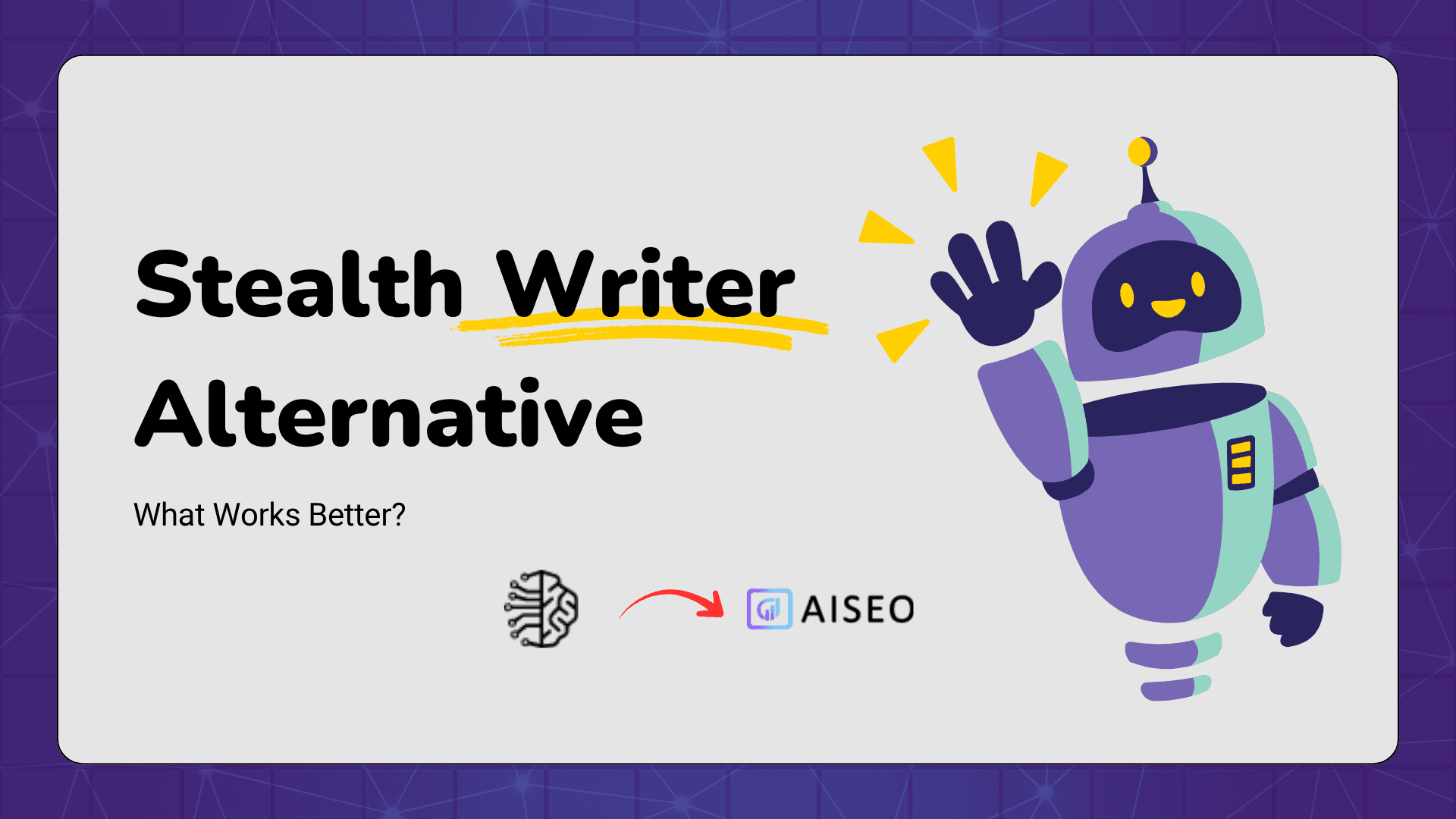AI writing tools help you work faster, but they also create a new challenge: your content needs to sound genuinely human. When the tone feels robotic or predictable, it can trigger AI detection checks and damage trust with readers, clients, and even search engines. That’s why many people turned to stealth writers — tools that claim to hide AI. But if you’ve ever tested one, you already know the problem: while it may reduce detection, it often ruins readability. Sentences become awkward, the flow is broken, and you spend more time repairing the text than benefiting from AI in the first place.
So now you’re searching for a stealth writer alternative that doesn’t hurt your writing quality. You want content that is fluent, natural, and believable. You want to publish confidently — without worrying about penalties, flags, or odd phrasing that exposes automation. That’s exactly why modern AI-humanizing tools have become the better solution. Instead of trying to trick detectors, they focus on improving the writing itself.
Among today’s choices, AISEO stands out as the leading option — because it doesn’t just hide AI signals, it elevates your content so readers trust what you write.

Why You’re Looking for an Alternative in the First Place
Stealth Writer — also marketed as a humanization solution — promises to make AI text undetectable by any detector. It offers features like a browser extension, essay writer, mobile app, and “Extreme Stealth Mode.” The core message is attractive: write freely, bypass AI identification, and keep producing at scale. Students and writers are drawn to it because it claims millions of papers have already been humanized.
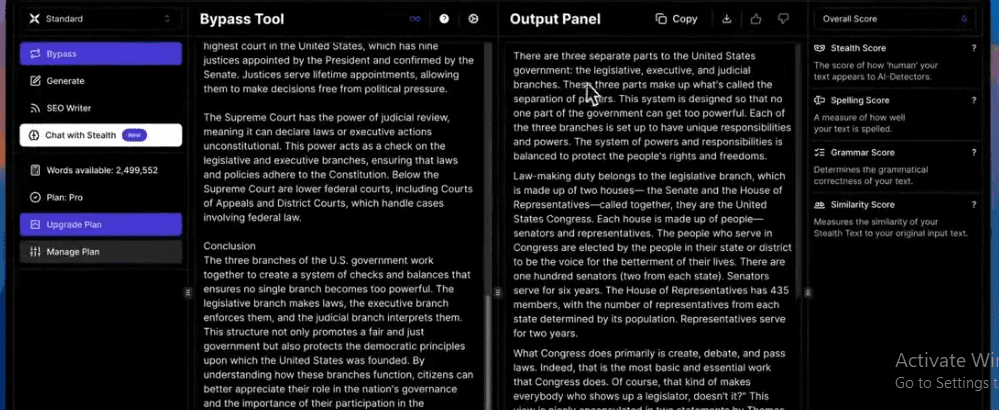
But once you look beyond the promise, the drawbacks become noticeable.
It hides AI, but doesn’t always preserve readability
The tool often alters sentence patterns, structure, and grammar in ways that feel unnatural. Yes, it may lower AI detection scores — but the content can start sounding disconnected from human communication standards, especially in professional contexts.
You still spend too much time fixing the output
The point of using an AI assistant is efficiency. Instead, you find yourself repairing awkward passages, rewriting large chunks, and manually restoring tone. The time saved in creation gets lost in cleanup.
Worse still, you cannot even test the tool for free before subscribing. You’re asked to commit financially without knowing whether the quality will meet your needs. That means you take a risk upfront — only to discover later that you must spend hours fixing output that was supposed to make your workflow easier.
The writing doesn’t reflect your own voice
Readers can sense when a piece feels “off,” even if detectors don’t. And if you are submitting important work — like client-facing content, business articles, academic essays — voice and trust matter more than invisibility.
Pricing doesn’t solve the core issue
Subscriptions start at nearly $25 per month, increasing to $35–$50 monthly depending on features. But despite higher pricing tiers, output is still often riddled with the same quality concerns.

In other words:
Stealth Writer is designed to beat detectors… but not designed to make your writing better.
And that’s why you’re here.
You don’t want a band-aid solution that only focuses on hiding AI signals. You want a tool that improves the writing — so readers, editors, and platforms trust it automatically.
You want a stealth writer alternative that supports:
• Credibility • Readability • Authentic tone • Professional publication standards
AISEO: The Best Stealth Writer Alternative for Real-World Publishing
You’ll notice the difference with AISEO in the first paragraph it produces. It prioritizes clarity, cadence, and logical transitions, so you aren’t cleaning up broken sentences or odd phrasing just to make the piece sound human. The larger shift, though, is strategic: AISEO is built around SEO-aware long-form creation.
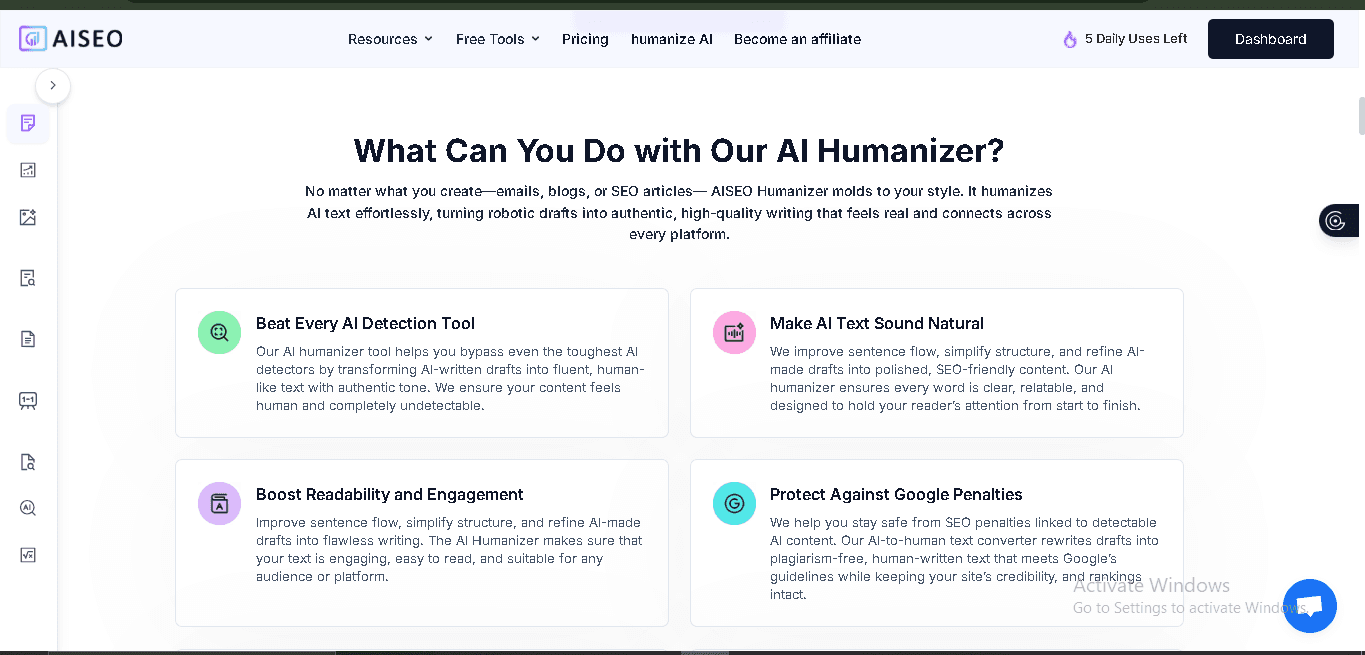
When you feed it a topic or a primary keyword, it doesn’t simply expand text; it frames a structure that mirrors how high-performing pages are organized—title logic, section sequencing, supportive subtopics, and a sensible target length that aligns with competitive pages rather than arbitrary word quotas.
That makes your draft easier to rank and easier to edit. You can push into depth with the Long-Form Assistant, which avoids the looped paragraphs and phrase recycling you see in tools that were trained primarily for short outputs.
If you’ve had issues with repetition after 1,000–1,500 words, you’ll appreciate that AISEO sustains topic development without losing coherence. The result is content you can confidently position as a pillar page or a definitive guide rather than a stitched-together set of paragraphs.
AISEO’s readability improver matters just as much. Instead of “gaming” detectors by degrading grammar, it uses the Hemingway-style approach to simplify overly dense passages, reduce passive voice, and tighten sentences where you’re rambling.
That balance—human rhythm without artificial mistakes—is why it tends to sit comfortably under detectors while remaining easy to read. You’re not hiding from algorithms; you’re meeting the expectations of both algorithms and people.

What Makes AISEO Standout as a Stealth Writer Alternative?
The biggest advantage AISEO has over Stealth Writer is simple: it does far more than just humanize AI text. Stealth Writer is built around one core idea — lowering AI detection — but that comes with limited functionality. AISEO, on the other hand, is a full content platform with features for creation, optimization, authority building, and academic reliability—all in one place. Instead of forcing you to use multiple tools to get your content ready, AISEO brings every step into a single workflow.
Where Stealth Writer stops at rewriting, AISEO unlocks more ways to improve and grow your content, including:
Humanize AI
AISEO’s Humanize AI feature improves AI-generated text without distorting meaning or readability. Instead of randomly breaking sentence structure like many stealth writers do, AISEO rewrites in a way that strengthens clarity, emotional tone, and linguistic patterns that humans naturally use. This reduces AI detection while making content easier and more enjoyable to read.
Whether you’re working on blog posts, academic papers, or branded content, the rewritten version keeps your voice intact and doesn’t embarrass you with strange grammar. You get human-sounding writing that feels authentic — exactly what a real stealth writer alternative should accomplish.
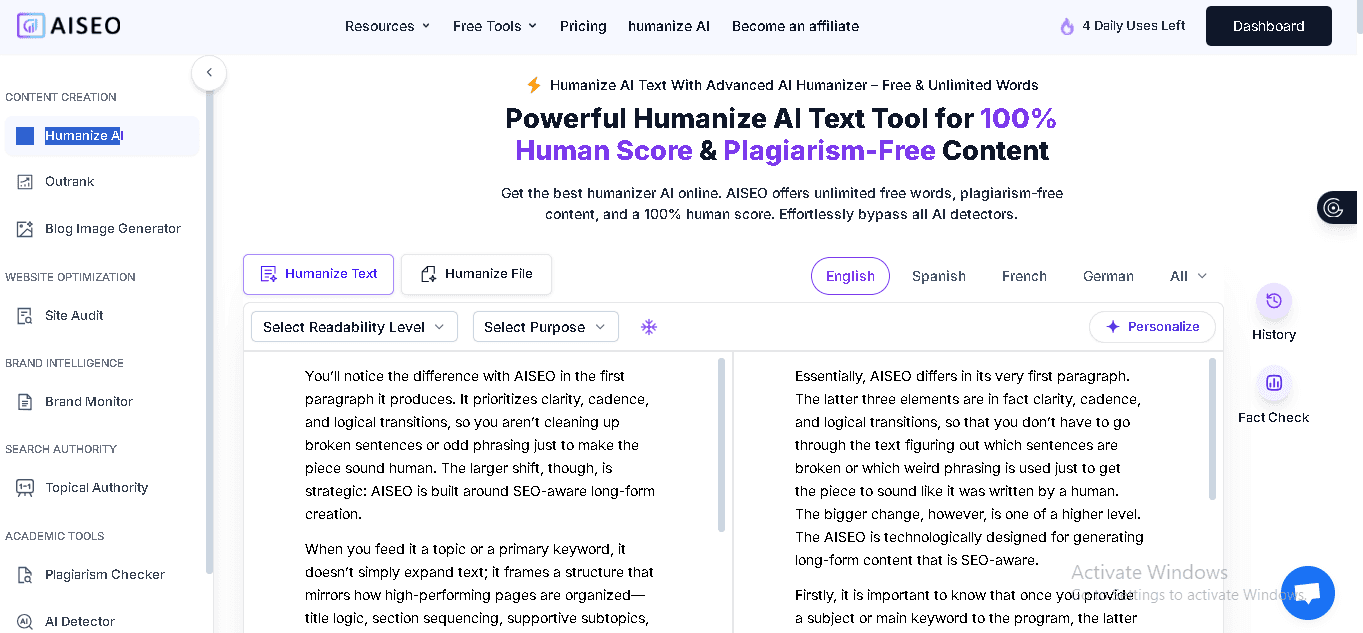
Outrank
For anyone creating content meant to rank on search engines, AISEO’s Outrank tool is a major advantage. It analyzes the top-performing pages for your target keyword and builds a content structure designed to compete — using real data, not guesswork. It helps you provide better explanations, cover relevant subtopics, and match proper content length to user intent.
By following these insights, you improve your chances of surpassing established competitors in Google search. Stealth writers do not offer anything like this. AISEO doesn’t just help your writing avoid penalty — it gives it a strategy to win visibility and organic traffic.

Blog Image Generator
Strong written content performs even better when paired with visuals. With AISEO’s built-in Blog Image Generator, you can instantly create images that match your topic, style, or brand needs — without leaving the platform or paying for stock photos. This reduces production time and ensures your content looks polished and professional when published.
Custom images also increase engagement, scrolling behavior, and shareability, which supports SEO. Instead of worrying about designing graphics separately or using generic images that weaken credibility, AISEO lets you complete your entire publication workflow in one place. The result: better-looking content with less effort.
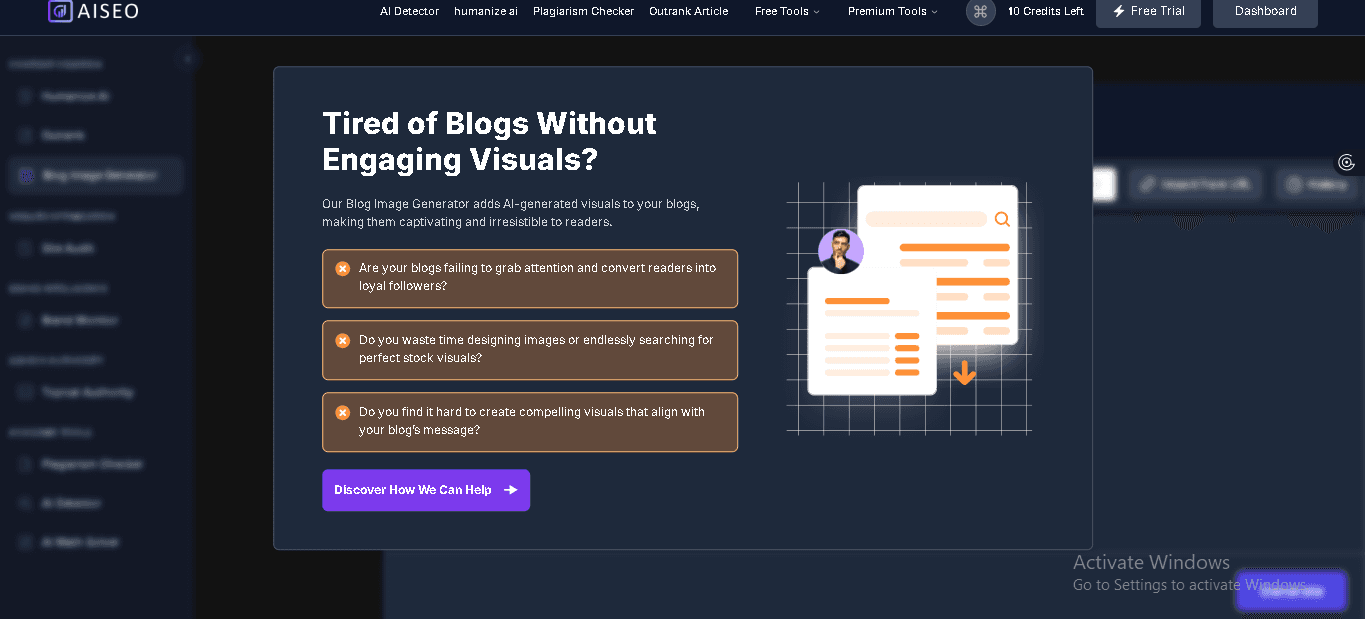
Site Audit
Publishing humanized text isn’t enough if your website is struggling behind the scenes. AISEO’s Site Audit helps you identify and fix technical SEO issues affecting search performance. From broken internal links to missing meta data, the tool highlights everything necessary to support stronger visibility. It ensures that every article you publish has a fair chance to rank and reach your audience.
With one platform to optimize both writing and site structure, your content performs better long-term. Stealth writing tools offer nothing beyond text manipulation — AISEO supports the full success of your content once it goes live.
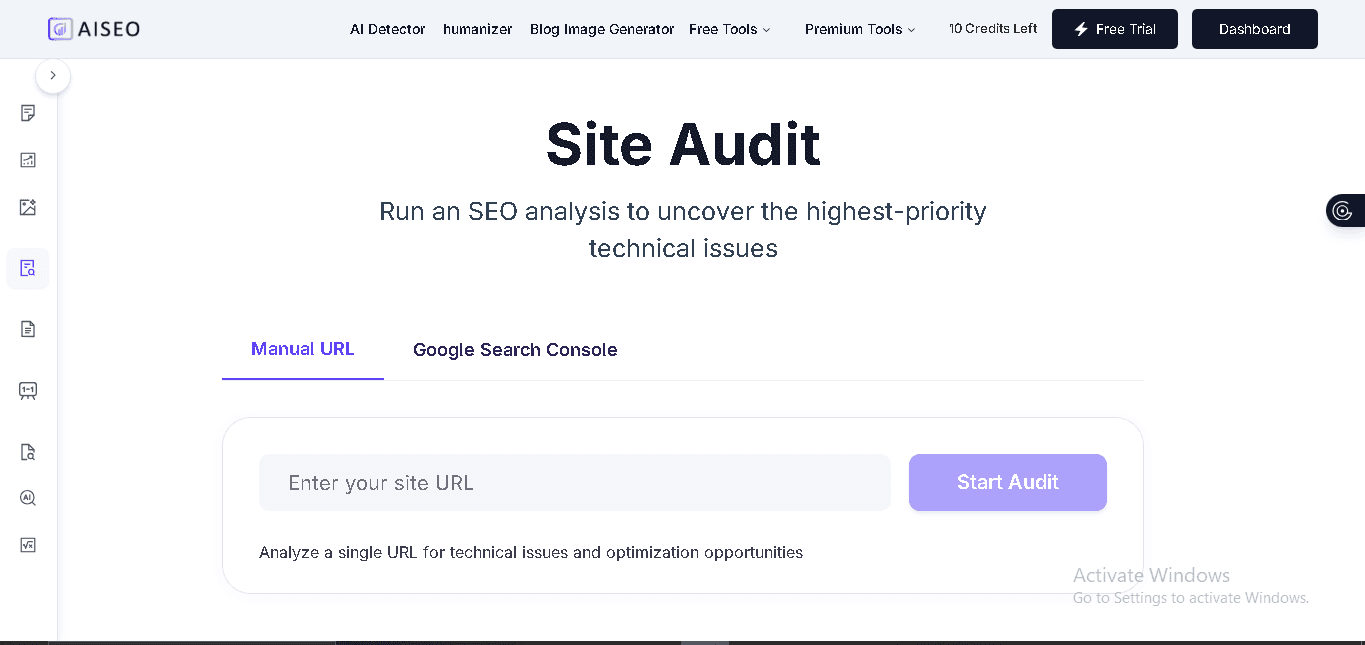
Brand Monitor
In a world where trust matters, AISEO’s Brand Monitor keeps track of your brand mentions and public perception across the web. Whether you’re managing a business or personal brand, staying aware of visibility and sentiment is essential. This tool helps you understand what people are saying about your work so you can shape messaging accordingly and avoid reputation challenges.
Good writing builds brand authority — and AISEO ensures that authority stays protected. While stealth writing focuses only on avoiding AI flags, AISEO supports your ability to publish confidently and maintain a positive presence in your industry or niche.
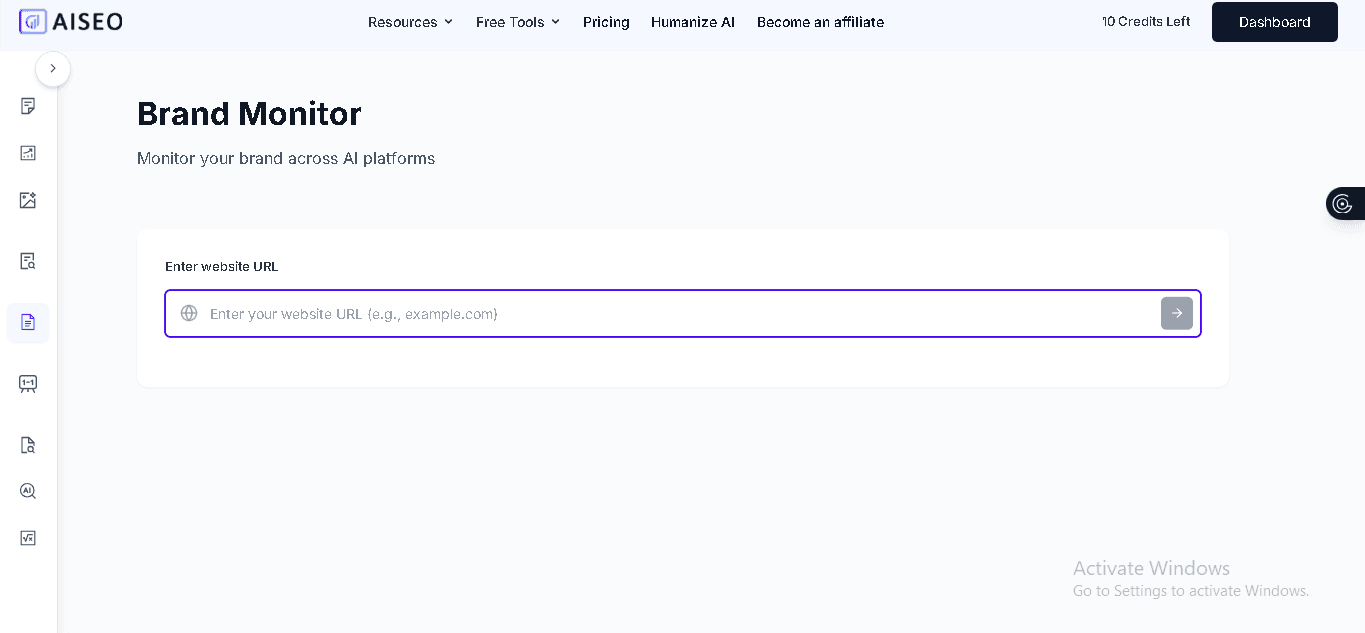
Topical Authority
Search engines now reward experts — not one-off publishers. AISEO’s Topical Authority feature maps out topics and subtopics you should cover in order to become a recognized source in your field. Instead of guessing what to write next, you follow a content plan driven by relevance and ranking logic.
Over time, this approach builds trust with both readers and algorithms, allowing your content to dominate a subject rather than disappear among competitors. Stealth tools can’t help with visibility or authority. AISEO gives you a long-term strategy that transforms writing into lasting presence — and a competitive edge.
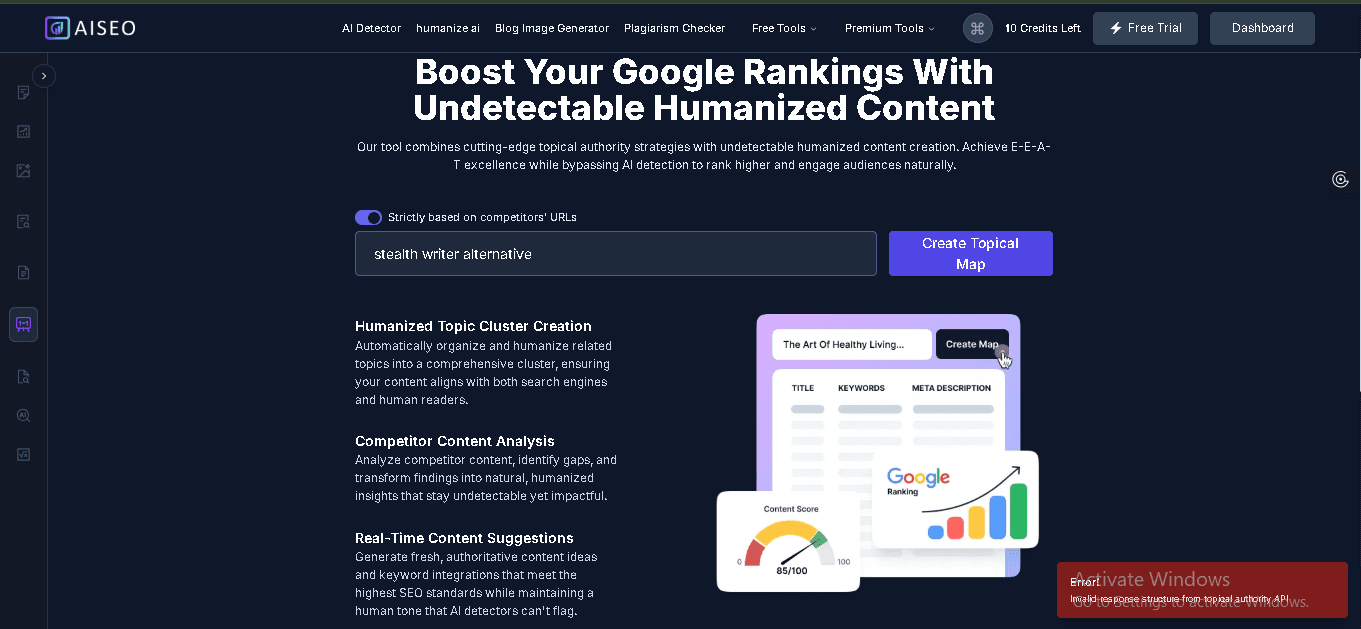
Plagiarism Checker (100 words)
Originality is non-negotiable in academic, professional, and branded content. AISEO includes a plagiarism checker to ensure that everything you publish is unique and trustworthy. Even when you write from scratch, AI algorithms may inadvertently mirror existing content — so this tool protects you from accidental duplication.
It’s especially critical for students, businesses, and creators who want to avoid legal, ethical, or ranking penalties. Instead of offering a risky “just make it undetectable” shortcut, AISEO ensures both human-sounding and original results. That level of reliability sets it apart from tools that rewrite purely for concealment.

AI Detector
With AISEO’s built-in AI Detector, you can verify detection scores before publishing. You’re in control of making improvements instead of guessing whether your content looks automated. This transparency builds confidence in your final draft and helps you maintain consistency for long-term credibility. Stealth writers typically lack this kind of honest feedback. AISEO offers the ability to write, humanize, and evaluate output — all in one streamlined workflow.
When accuracy matters, and when you’re accountable for the authenticity of your writing, having a detector available right inside the tool ensures that your standards stay high without extra steps.

AI Math Solver
Academic content often includes more than just words. AISEO’s AI Math Solver makes equations, formulas, and problem-solving easier for students and researchers who need both writing and analytical support. It helps ensure correctness in areas where AI rewriting tools cannot — numbers, logic, and precise explanation.
For coursework or technical writing that requires accuracy, this feature removes guesswork completely. Instead of relying on a stealth tool that only masks AI assistance, AISEO delivers true academic utility. It helps you produce complete assignments that meet real educational requirements — not just content that avoids identification.

AISEO Pricing: Plans Designed to Fit Every Writer’s Needs


Humanize AI Text Pricing: A Cost-Effective Stealth Writer Alternative
Humanize AI Text focuses on: transforming AI-generated text into natural, human-quality writing that avoids detection. Its pricing structure is built to support that single purpose — offering affordability for students, solo creators, and professionals who need clean, readable text without buying an entire AI content suite.
You still get powerful humanization features including plagiarism safeguards, real-time authenticity scoring, and multilingual support—making it a smart entry-level tool.
Pricing Plans Overview


(Prices shown during flash sale window.)
Key Capabilities Included in Both Plans
• Undetectable Content Generator — rewrites text to pass AI detectors • Advanced Humanization — maintains meaning & flow • Multilingual Support (26 languages) • Plagiarism Detection & Automatic Fixing • AI Detector Evasion Techniques • File Upload Support (DOC, PDF, PPT)
The Scale plan adds two major upgrades:
• Real-Time Human Score Analysis — shows how authentic your writing appears • Priority phone + email support — fast help when deadlines matter
Who Should Use Humanize AI Text?
Humanize AI Text is ideal for users who:
✔ Already write content but need it to sound more human ✔ Submit academic papers or assignments requiring authenticity ✔ Care more about readability than ranking or SEO optimization
It works well for:
• Students • Freelance writers • Bloggers and journalists • Social media creators • Startup founders
If you don’t need SEO strategy, site audits, topical authority, or content planning — this tool provides humanization only, at a friendly price point.
Final Verdict
A stealth writer tries to hide the signs of automation, but it often hides what matters most: clarity, credibility, and the human arc of an argument. A stealth writer alternative should restore those things—not just conceal the rest. AISEO does that by giving you long-form structure, SEO awareness, and a humanizer that improves writing instead of breaking it. Humanize AI Text does it by focusing on the last mile: a believable voice that reads cleanly to editors, clients, and customers.
You don’t have to choose between undetectable and readable anymore. Choose publishable. Choose sustainable. If you care about rankings, brand voice, and editorial confidence, AISEO is the upgrade that makes your next draft your next published piece. And when you only need a fast tonal polish, Humanize AI Text is the lightweight fix that gets you there without ceremony.
That is what a real alternative looks like: not a trick, but a toolset that helps you write work you’re proud to sign—and unafraid to ship.

Frequently Asked Questions About Stealth Writer Alternatives
1. What is the best Stealth Writer alternative right now?
The most reliable and feature-rich Stealth Writer alternative is AISEO. Unlike Stealth Writer, which focuses solely on bypassing AI detection, AISEO offers a complete content creation ecosystem: human-quality rewriting, SEO optimization, plagiarism checking, topical authority building, brand monitoring, advanced language support, content expansion, and automatic blog image generation. \
If your writing needs to be seen, trusted, and ranked, AISEO gives you everything in one place. For users who only need fast humanization without SEO features, Humanize AI Text is a solid secondary pick.
2. Why do people stop using Stealth Writer?
The main reason is that Stealth Writer places its priority on evading AI detection — not improving writing quality. That sometimes results in:
• Awkward phrasing • Grammar disruptions • Loss of clarity and meaning • Heavily edited rewrites needed afterward
Many users also mention the lack of a free trial, meaning you must pay before knowing if the tool produces the readability level you expect. As AI detection systems evolve rapidly, users prefer solutions like AISEO that not only stay undetectable but also produce natural, professional-standard writing from the start.
3. Does AISEO help content rank on Google?
Yes. AISEO includes SEO-driven tools like Outrank Article, Topical Authority, Readability Improver, and Site Audit that ensure your content is optimized for search intent. It recommends correct keywords, structure, title formatting, meta details, and supporting subtopics. Stealth Writer has no SEO abilities, meaning your writing may be undetectable — but invisible to your audience. AISEO ensures your writing performs well on real platforms where your success actually matters.
4. Does AISEO make content sound more human than Stealth Writer?
Absolutely. Stealth Writer often injects imperfections to fool detectors. The result may pass algorithmic checks but fail real-world readability tests. AISEO focuses on:
• Smooth sentence flow • Natural rhythm and emotions • Voice consistency • Logical structure
That means the content does not look suspicious to humans or AI tools. If a professor, editor, or client reads your writing, it still feels confident and trustworthy — not chaotic or artificially “messy.”
5. How does AISEO handle bypassing AI detection?
AISEO improves linguistic patterns rather than damaging them. Its Humanize AI engine:
• Adjusts repetitive structures • Enhances bursts of creativity • Introduces real human stylistic tendencies • Preserves context accuracy
You get high human-score results while keeping a polished, readable final outcome. And with its built-in AI detector, you can verify results before submitting or publishing. This is a major upgrade over Stealth Writer, where you must trust output blindly.
6. Can students use these tools safely?
Students use tools like AISEO and Humanize AI Text to improve clarity, structure, and readability — especially when writing longer academic pieces. The key is using these platforms responsibly: enhancing writing you’ve already created rather than outsourcing your thinking entirely. AISEO also includes:
• Plagiarism checker • Readability booster • Math solver • Humanization designed to sound like student writing
These features make your finished work more polished and legitimate — without creating something incoherent or suspiciously robotic.
7. What makes AISEO more cost-effective than Stealth Writer?
Stealth Writer pricing begins around $24.99/month and increases to business-level tiers without adding substantial writing or SEO benefits. AISEO, by contrast, offers $1 trial access, and every plan includes content creation, humanization, detection checks, SEO enhancements, and academic safety tools.
Here’s a simpler breakdown:

For the same cost or slightly more, AISEO gives far more professional-grade abilities.
8. What if I only want to humanize short text quickly?
If you write short-form content like personal letters, captions, or small assignments — and don’t require SEO features — Humanize AI Text could be the simpler match. It is affordable, fast, and dedicated purely to readability and detection evasion. It also supports real-time human score evaluation.
However, for long-form writing, business publishing, or anything that must perform publicly, AISEO remains the better investment.
9. Can these tools handle multiple languages?
Yes. Both AISEO and Humanize AI Text support multilingual rewriting, but AISEO covers wider language intelligence across:
• Tone adaptation
• Brand voice consistency
• SEO requirements in foreign markets
It’s well-suited for international content strategies where translation must still feel human, not auto-generated.
10. Will AI detectors ever become too smart for these tools?
AI detectors continue advancing, but platforms like AISEO evolve just as quickly. Its humanization engine does not depend on loopholes — it addresses the core issue: predictable patterns that make AI content recognizable. Even as detection becomes more advanced, AISEO focuses on writing that reads like real human thought.
As long as writing remains:
• Original
• Context-aware
• Emotionally aligned
• Stylistically diverse
It will continue to outperform detection schemes.
11. Which alternative is best for businesses and marketing teams?
AISEO. Without question.
Marketing content must:
• Rank
• Persuade
• Inform
• Convert
• Represent a brand accurately
Stealth Writer can’t help with any of these.
AISEO, however, handles:
✔ SEO smart structuring
✔ Brand voice consistency
✔ Content scaling for teams
✔ High-volume generation
✔ Measurable ranking improvements
This is why agencies and brands searching for a Stealth Writer alternative ultimately choose AISEO.
12. What’s the final verdict?
If you want content that only avoids AI detection and nothing else — use Humanize AI Text. If you want content that:
✅ Sounds human
✅ Performs professionally
✅ Ranks in search engines
✅ Protects originality
✅ Enhances your brand
✅ Grows authority
✅ Saves rewriting time
Then AISEO is the #1 Stealth Writer alternative today.
You’re not just avoiding problems. You’re upgrading your writing into something undetectable, publishable, and profitable.

About Dilyar Buzan
Founder & CEO at AISEO
Artificial Intelligence - University of Amsterdam
LLM engineer
